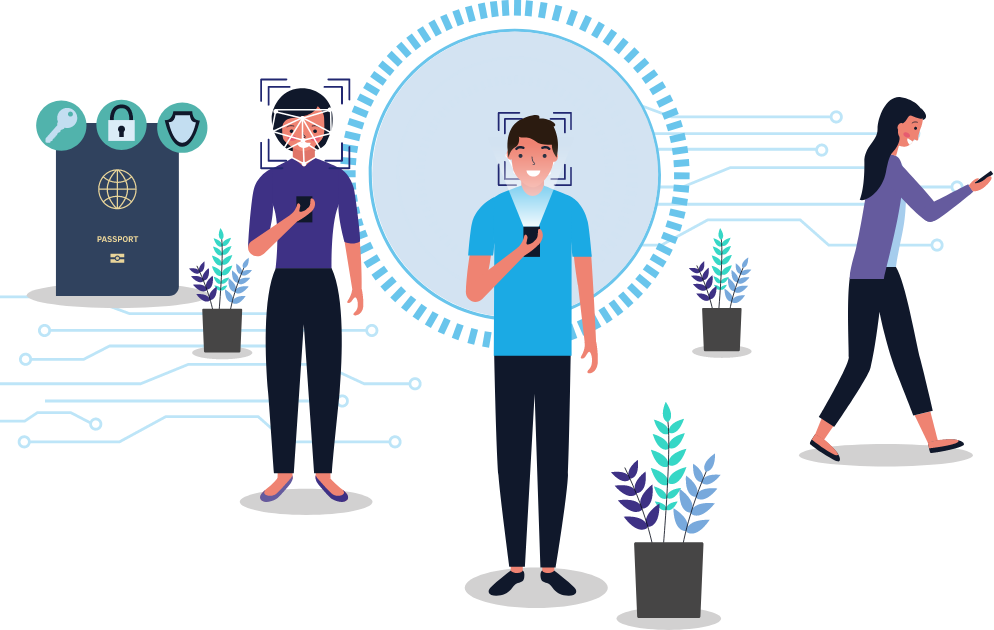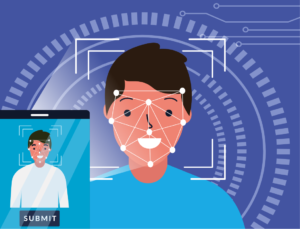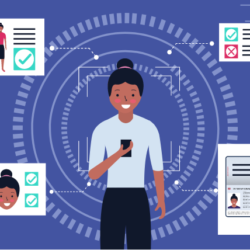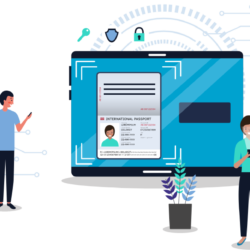Facial recognition software and passive liveness in identity verification

From May 2020, the TrustID Cloud service includes a facial recognition and liveness test option. But how can facial recognition support identity validation? We’ve created this overview of the service to help you find out more about what it means and how it could help your organisation with on-boarding:
What is facial recognition software?
In very simple terms, facial recognition technology compares a person’s face against one or more other faces to determine whether there is a match. It is a fast-growing biometric technology which is increasingly being incorporated into everyday life.
Some situations in which facial recognition software (FRS) is already used include:
• Does a suspect’s photograph match against a police database of known criminal faces?
• Can a missing person’s photograph be matched to anyone on CCTV footage captured at a shopping centre?
• Does someone’s passport photograph match a selfie they claim to have taken?
What is liveness detection?
A biometric liveness check is the process of checking whether the features being presented to the biometric application are those of a live human being and not a copy or imitation of those features, for example, taken from a previously captured photograph or screenshot.
In many systems, this ‘anti-spoofing’ step is carried out by videoing the person taking a selfie during the capture process and then asking them to say or do something, for example move their head left and then right or say a phrase or number on the screen. However, this process sometimes leads to a difficult user experience.
A more recently developed way to validate whether a selfie is being captured by a real person is ‘passive liveness’, an anti-spoofing method which is now featured in our service. It requires the user to take a selfie but doesn’t ask them to do anything else. The selfie is then analysed by AI-technology to determine whether it was taken by a live person. Passive liveness is easier for the user and causes less ‘friction’ in the onboarding process.

How do our services use Facial Recognition Software and liveness detection?
We have introduced FRS so that we can compare the face from the photo on an identity document (e.g. a passport) to a selfie of the person claiming to be the holder. Our service then runs the passive liveness detection test to give you peace of mind that the selfie was taken by a live person.
What are the benefits of using Facial Recognition and liveness detection?
Increased confidence
By combining identity document checks with FRS and liveness, not only can we validate the document to assess that it’s genuine, but we can also verify that it’s being presented by the person who owns it. This gives you increased confidence in the identity of your applicants or customers.
Additional security when making remote checks
This dual check is particularly important when you are checking documents remotely, as you aren’t seeing the holder in person. Fraudsters will be less willing to capture their face on a selfie and this extra check is an additional safeguard against genuine but fraudulently obtained documents getting through your checks.
Streamline onboarding
A remote, automated check will streamline your customer onboarding process. Your customers can choose to submit ID, capture their selfie and complete their ID check when it suits them, without having to come to your premises.
Want to find out more?
If you’d like to discuss how facial recognition software could support your identity verification process, please get in touch.
Sign up to receive updates
Receive notifications from TrustID direct to your inbox. Simply fill out your email address in the form below.
Want to find out more?
We’d be really happy to chat through your requirements and offer advice on the best service for your business.
Tel: 0118 466 0822 or email us.
Request a callback


